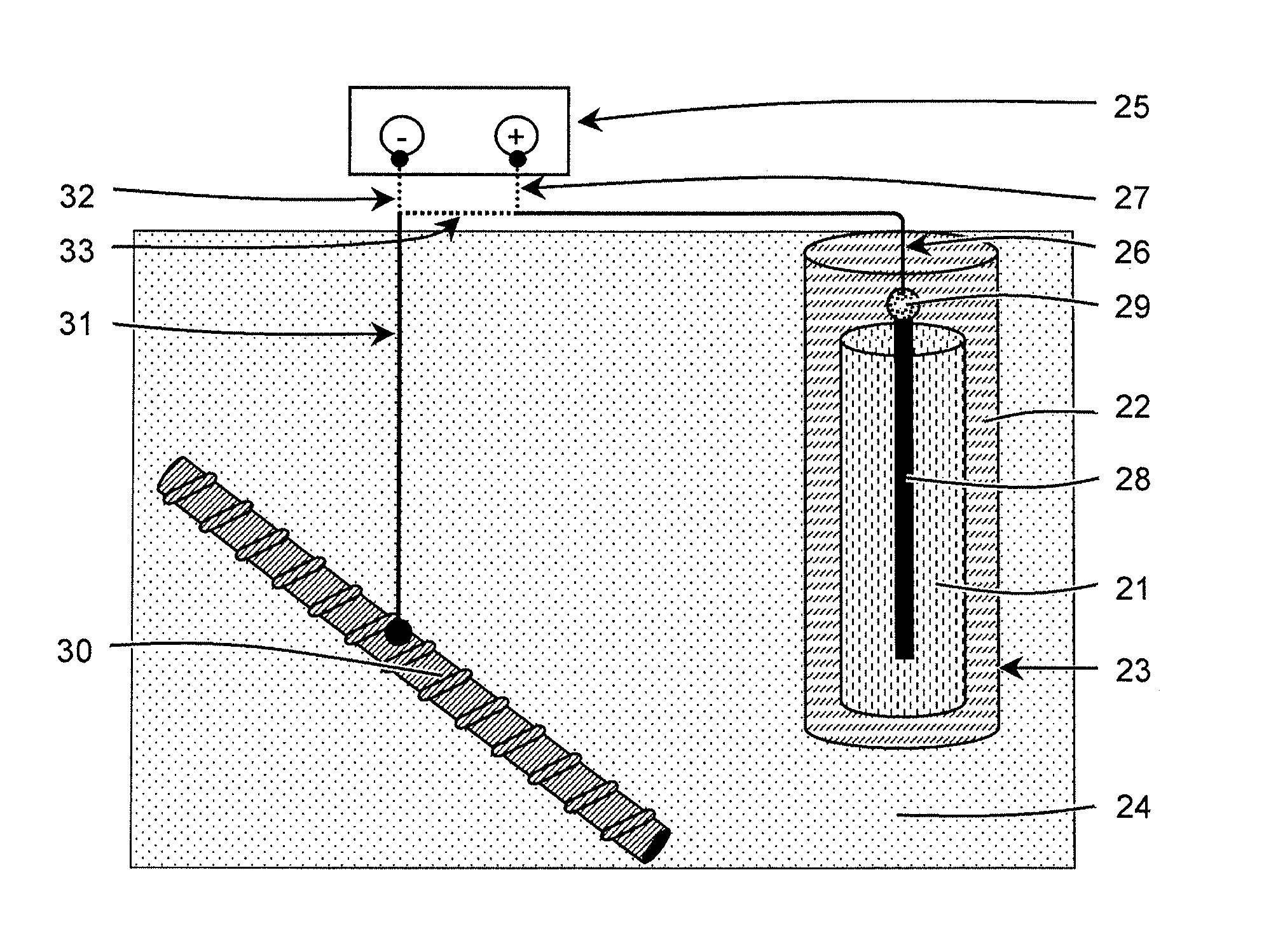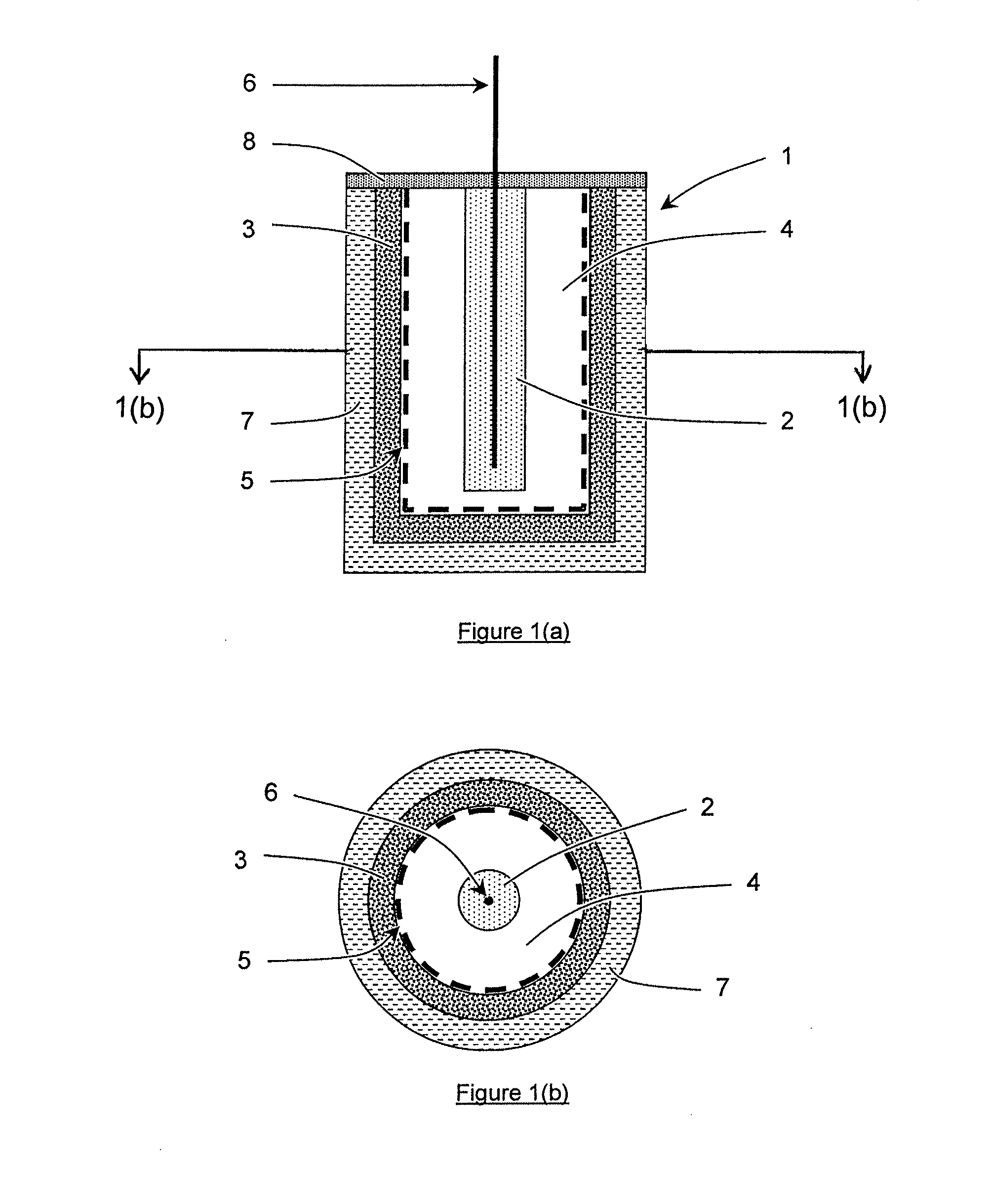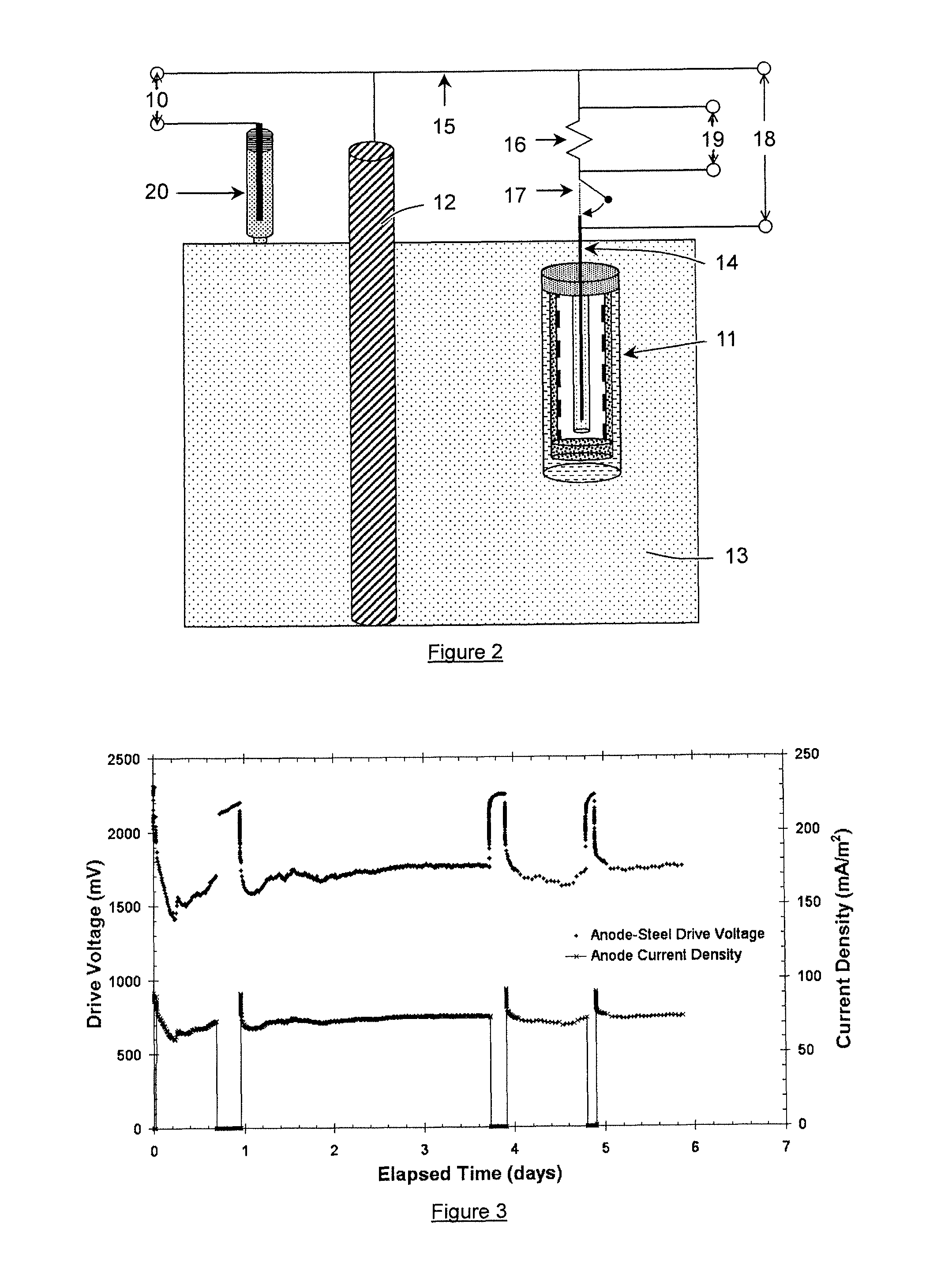Sacrificial anode and treatment of concrete
a technology of concrete and anodes, applied in the field of sacrificial anodes, can solve the problems of difficult power supply problems, restricted oxidation of metals, complex circuits, etc., and achieve the effect of high resistance, high resistance and good use effect of current flow
- Summary
- Abstract
- Description
- Claims
- Application Information
AI Technical Summary
Benefits of technology
Problems solved by technology
Method used
Image
Examples
example 1
[0029]In one example a sacrificial anode and the cell may be connected together so as to form a single unit; in particular the sacrificial anode assembly may be a single assembled unit. This is, advantageous in that it reduces the complexity of the product and makes it easier to embed the assembly in the structure that includes the metal section to be protected or in a material identical or similar to that of the structure.
[0030]In particular, the sacrificial anode may be located in the assembly such that it is adjacent to the cell. The sacrificial anode may be of a shape and size corresponding with the shape of at least part of the cell, such that it fits alongside at least part of the cell. In a preferred embodiment the sacrificial anode forms a container within which the cell is located.
[0031]The sacrificial anode may be directly connected to the cathode of the cell, being in direct contact with the cathode of the cell, or may be indirectly connected to the cathode of the cell. I...
example 2
[0047]In another example, the present invention provides a method of cathodically protecting metal in which the sacrificial anode assembly in Example 1 above is cathodically attached to the metal via the connector of the assembly. In particular, a method of cathodically protecting steel reinforcement in concrete is provided, in which a sacrificial anode assembly, in accordance with the first aspect of the present invention, is cathodically attached to the steel.
example 3
[0048]In another example, the present invention provides a reinforced concrete structure wherein some or all of the reinforcement is cathodically protected by the method described in Example 2.
PUM
| Property | Measurement | Unit |
|---|---|---|
| current density | aaaaa | aaaaa |
| current density | aaaaa | aaaaa |
| width | aaaaa | aaaaa |
Abstract
Description
Claims
Application Information
 Login to View More
Login to View More - R&D
- Intellectual Property
- Life Sciences
- Materials
- Tech Scout
- Unparalleled Data Quality
- Higher Quality Content
- 60% Fewer Hallucinations
Browse by: Latest US Patents, China's latest patents, Technical Efficacy Thesaurus, Application Domain, Technology Topic, Popular Technical Reports.
© 2025 PatSnap. All rights reserved.Legal|Privacy policy|Modern Slavery Act Transparency Statement|Sitemap|About US| Contact US: help@patsnap.com



